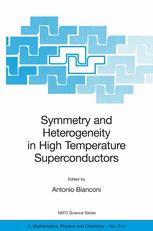

Most ebook files are in PDF format, so you can easily read them using various software such as Foxit Reader or directly on the Google Chrome browser.
Some ebook files are released by publishers in other formats such as .awz, .mobi, .epub, .fb2, etc. You may need to install specific software to read these formats on mobile/PC, such as Calibre.
Please read the tutorial at this link: https://ebookbell.com/faq
We offer FREE conversion to the popular formats you request; however, this may take some time. Therefore, right after payment, please email us, and we will try to provide the service as quickly as possible.
For some exceptional file formats or broken links (if any), please refrain from opening any disputes. Instead, email us first, and we will try to assist within a maximum of 6 hours.
EbookBell Team

4.3
88 reviewsThe object of this book is the quantum mechanism that allows the macroscopic quantum coherence of a superconducting condensate to resist to the attacks of high temperature. Solution to this fundamental problem of modern physics is needed for the design of room temperature superconductors, for controlling the decoherence effects in the quantum computers and for the understanding of a possible role of quantum coherence in living matter that is debated today in quantum biophysics. The recent experimental results on nanoscale phase separation and the two component scenario in high Tc in doped cuprate and the lower symmetry in the superconducting elements at high pressure area presented. The compelling evidence for multiband superconductivity in MgB2 that provides the simplest system for testing the high Tc theories, and plays the same role as atomic hydrogen for the development of the quantum mechanics in the twenties, is one of the main points of the book. The multiband superconductivity enhances the critical temperature from the low Tc range Tc < 19K, to the high temperature range, Tc = 40K. The heterogeneous structure, the superlattice of superconducting layers, determines the disparity and different spatial location of the Bloch wave functions of electrons at the Fermi level that provides in superconductivity the clean limit. The chemical potential can be tuned by atomic substitutions without increasing inelastic single electron interband scattering. The Feshbach shape resonance in the exchange-like off-diagonal interband pairing term, as predicted since 1993, appears to be the mechanism for evading temperature decoherence effects and enhancing the critical temperature.